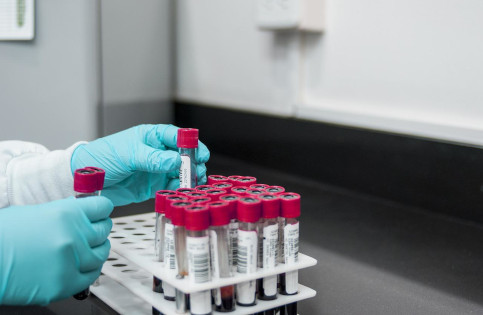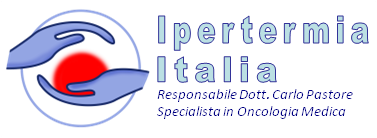Docetaxel ed ipertermia
Nuovo studio su Docetaxel ed ipertermia
 Uno studio molto interessante sull'interazione tra chemioterapia (docetaxel) ed ipertermia.
Uno studio molto interessante sull'interazione tra chemioterapia (docetaxel) ed ipertermia.
Tumor local chemohyperthermia using docetaxel-embedded magnetoliposomes: interaction of chemotherapy and hyperthermia.
Source
Department of Surgery, Ehime University Graduate School of Medicine, Toon, Ehime, Japan Department of Condensed Matter and Plasma Physics, Ehime University Graduate School of Science and Engineering, Matsuyama, Ehime, Japan Department of Materials Science and Biotechnology, Ehime University Graduate School of Science and Engineering, Matsuyama, Ehime, Japan.
Abstract
Background and Aim: We have studied and reported the usefulness about tumor local chemohyperthermia at the low-grade temperature below 43°C with docetaxel-embedded magnetoliposome (DML) and an applied alternating current (AC) magnetic field. However, the mechanisms of this treatment and the dynamics of the injected docetaxel were not investigated in our previous study. Thus, we investigated the interaction of chemotherapy and hyperthermia in the treated tumor. Methods: Human MKN45 gastric cancer cells were implanted in the hind limbs of Balb-c/nu/nu mice. DML, magnetite-loaded liposome (ML), and docetaxel were injected into the tumors with or without being exposed to an AC magnetic field. Docetaxel and TNF? concentrations, the cell cycle, and cell death rates in the tumor were examined. Results: Docetaxel concentrations were significantly higher in the DML-injected group than in the docetaxel-injected group 3 days after injection. A G2/M peak was observed 1 day after treatment in the DML-injected and exposed group and the docetaxel-injected group, while it was observed 3 days after treatment in the DML-injected without heating group and the ML group. The tumor cell death rate gradually increased in the DML-injected with or without being exposed group, while it gradually decreased after its peak in other groups. The TNF? concentration in the tumor treated with DML with heating remained at a high level on the 7th day after treatment, while it decreased after its peak in other groups. Conclusion: The antitumor effect of this treatment derives from a combination of hyperthermia and chemotherapy locally in the tumor.
© 2011 Journal of Gastroenterology and Hepatology Foundation and Blackwell Publishing Asia Pty Ltd.

 RSS
RSS 





